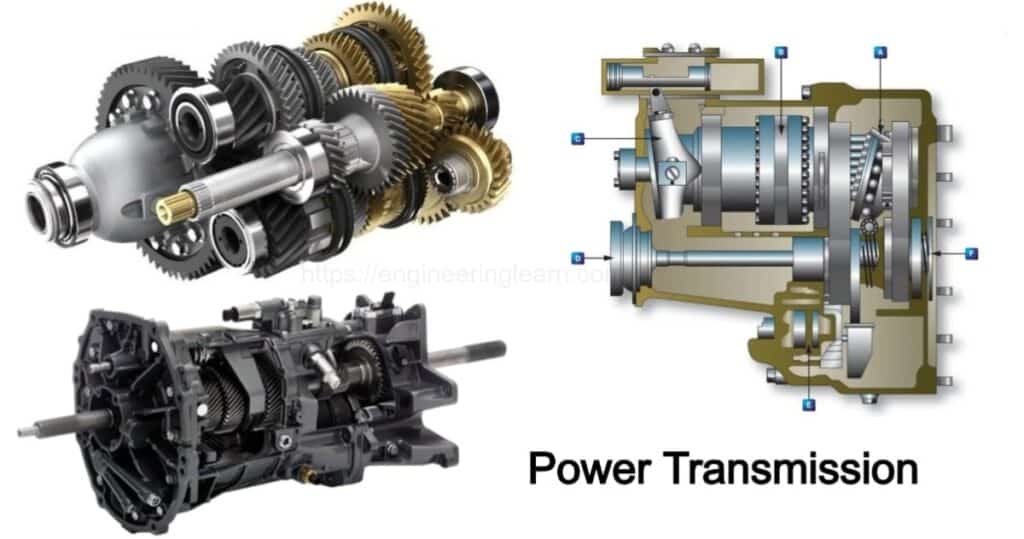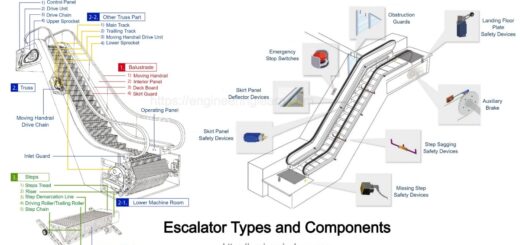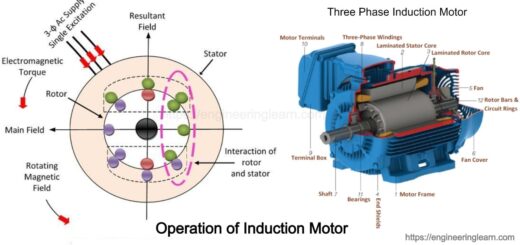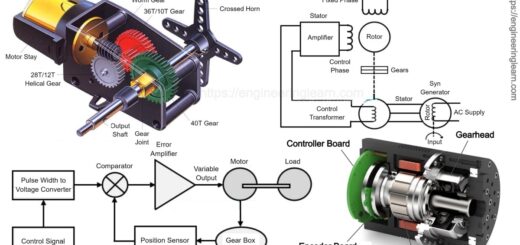Power Transmission in Mechanical Engineering

Power Transmission in Mechanical Engineering :- Power transmission is an engg. Method which base on the principle for power the machines & the working part of machines in terms of energy configurations, movement speed, forms of motion. Generally there are 4 types of transmission which all are currently in use are following:
- Mechanical transmission
- Pneumatic transmission
- Electrical transmission
- Hydraulic transmission
Drive /transporters or transmissions can be used for moving part of machines. All machines needs movement such as pumps, ventilators, conveyor belts etc. there are several drive system exist.
1. Mechanical transmission
A. Mechanical drives
Mechanical drives are one of the oldest technologies that are consistent in the sector. Power and movement both are initiated through drive engines such as belts, chain, or gears. Power is transmission through the rotational movement to another turning movement.
B. Belt drives
Belt drives the main purpose of the belt drives is to transfer power b/w two parallel axes by a belt. Pulleys are installed on these axles so the belts move freely over them. When pulleys of axles same diameter, they will rotate at the same speed. If one of the axles is different to the other the speed will be effectively increase or decrease. The pulleys of the belts drives usually rotate in the same direction.
Advantage: simple structure, long service life, capable of short distant transmission, transmission ratio is accurate.
Disadvantages: high accuracy requires high manufacturing cost.
2. Electric transmission
It uses the electric motor to convert the electrical energy into mechanical energy for operation of various types of production machinery. Electric motor is used as the power source with high accuracy and ball screw & timing are simple and efficient transmission mechanism. Motor providing repeatability error is 0.01%.
Energy saving:– the energy released through the operation in work phase cycle is reversed thus reduces the operating costs.
Noise reduction:– produce operating noise value is less than 70 decibel which is 2/3 value of the hydraulically driven drive injection molding machine.
Precise control:– accurate control according to set parameters, providing the necessary support high precision sensors, measuring devices, computer technology.
3. Pneumatic transmission
Uses the pressure of the gas or fluid by compressed gas (used as working medium). Pneumatic system in which power is supplied to compressed gas through the pipe equipped with control valve to the pneumatic actuator, actuators transforms the pressure of compressed gas into the work of mechanical energy.
Advantages: low working pressure, small gas loss provides the advantage in the supply & middle distance transporting, safe & explosion proof.
Disadvantages: air pressure is low & needs an air supply by compressor that is subject to addition in equipment cost.
4. Hydraulic transmission
hydraulic transmission uses liquid as working medium to transfer energy & control. Equipment with hydraulic technology is safe & reliable. It transmits energy by liquid kinetic energy. Impeller converts the rotational speed & torque input. Input and output shafts are connected working medium by liquid.









